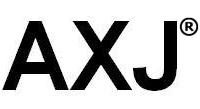WHAT IS MANUAL HANDLING IN THE WORKPLACE >> DOWNLOAD LINK
WHAT IS MANUAL HANDLING IN THE WORKPLACE >> READ ONLINE
Manual handling refers to workers carrying and moving loads by lifting, pulling, pushing or any other method that involves using their bodies and physical strength. Understanding manual handling in the workplace is very important when it comes to implementing a manual handling policyand reducing the risk of injury. The key principles of manual handling help us to take a measured approach to transporting or supporting a load by hand or bodily force. Using a step-by-step approach to planning manual handling activities, helps us determine the level of injury risk and allows us to implement suitable mitigation measures to reduce that risk to an acceptable level. Manual handling means transporting or supporting a load by hand or bodily force. It includes lifting, putting down, pushing, pulling, carrying or moving loads. A load can be an object, person or Manual handling is any activity that requires the exertion of force, whether it is to pull, push, lower, carry, hold, move or restrain. Common manual handling injuries include neck pain, arm and shoulder pain that includes fingers, hands, wrists, elbows, and forearms, as well as lower back pain. These injuries typically result from lifting The workplace is likely to be directly affected by manual handling injuries in terms of employee sickness, absence from work, time off for the treatment of injuries, and staff working below their optimal level of competency. Employees can often be uneducated on what constitutes manual handling: · Lifting · Carrying · Pushing · Pulling, · Moving The term manual handling refers to the act of pushing, pulling, or using one's physical force to lift and carry loads. Tasks not carried safely can pose a risk for injury. Manual handling injuries affects 1 in every 3 Australian workers. It also accounts for 24% of working days lost due to work-related injuries. Manual handling is work where you have to lift, lower, push, pull, carry, move, hold or restrain something. It's hazardous manual handling if it involves: repeated, sustained or high force sustained awkward posture repetitive movements exposure to sustained vibration handling people or animals loads that are unstable, unbalanced or hard to hold The Manual Handling Operations Regulations 1992 (MHOR) tell us that manual handling counts as a range of activities:. Lifting. Lowering. Pulling. Pushing. Carrying. Ensure safe manual handling by producing a workplace policy. Create a manual handling policy that aims to avoid—as far as possible—the need to undertake manual handling tasks. Under MHOR regulations, manual handling is classed as the supporting or transporting of any load. This doesn't just cover lifting, as it also extends to pulling, pushing, putting down, carrying and moving by or bodily force. The load itself doesn't have to be an object, as it can also apply to a person or even an animal. Manual Handling relates to the moving of items either by lifting, lowering, carrying, pushing or pulling. Incorrect manual handling is one of the most common causes of injury at work. Work-related musculoskeletal disorders (MSDs) such as back pain, limb & joint pain and repetitive strain injuries, account for over a third of all workplace injuries. Manual handling refers to any activity requiring the use of force by a person to lift, lower, push, pull, hold or restrain something. Putting boxes on shelves, painting, gardening, cleaning
![]()







 BECOME A RESELLER AND MAKE $$$ NOW!
BECOME A RESELLER AND MAKE $$$ NOW!




 <\/a>
<\/a> 

You need to be a member of AXJ to add comments!
Join AXJ